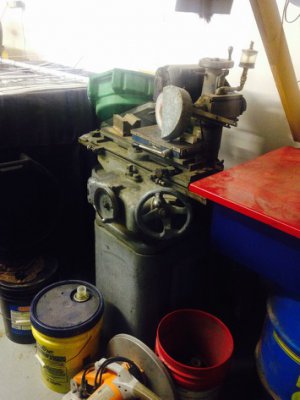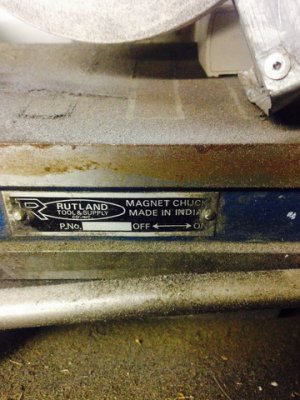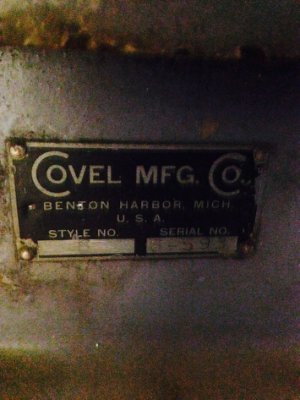- Joined
- Apr 21, 2015
- Messages
- 894
I just inherited a Covel surface grinder. I had expected to get a mill and my own lathe before getting a surface grinder but I'm certainly not going to pass this up. This was my grandfather's.

 My father gave it to my brother because my father had neither room nor need for it and my brother had both. My father kept the lathes and other goodies. He's not a fool.
My father gave it to my brother because my father had neither room nor need for it and my brother had both. My father kept the lathes and other goodies. He's not a fool. 
Now my brother has decided he doesn't need it and wants the space back. He's giving it to me.
I asked him for a picture and the make and model, as well as gross measurements, so I can make room for it. He lives an hour away so it's not practical to just go look. The pictures he sent aren't very clear. Can you tell what model this is?
Also is that a permanent magnetic chuck? I assume?
I have some setup blocks including magnetic chuck-friendly 1-2-4 blocks and v-blocks and regular right angle plates. I have a box of grinding wheels including a "tool room sample pack". I'm not sure if they fit but since they came from my grandfather's basement I assume they do.
What else do I need? Other than rags and solvent (what kind is best?) and elbow grease to clean it up? I have lots of scrap A36 flat bar stock to practice on.
I need to stop writing about this and go make room for it. Oh, any idea how much it weighs? Need to borrow a trailer to get it so I want to make sure I get one that is up to the task.
Thanks!


 My father gave it to my brother because my father had neither room nor need for it and my brother had both. My father kept the lathes and other goodies. He's not a fool.
My father gave it to my brother because my father had neither room nor need for it and my brother had both. My father kept the lathes and other goodies. He's not a fool. Now my brother has decided he doesn't need it and wants the space back. He's giving it to me.
I asked him for a picture and the make and model, as well as gross measurements, so I can make room for it. He lives an hour away so it's not practical to just go look. The pictures he sent aren't very clear. Can you tell what model this is?
Also is that a permanent magnetic chuck? I assume?
I have some setup blocks including magnetic chuck-friendly 1-2-4 blocks and v-blocks and regular right angle plates. I have a box of grinding wheels including a "tool room sample pack". I'm not sure if they fit but since they came from my grandfather's basement I assume they do.
What else do I need? Other than rags and solvent (what kind is best?) and elbow grease to clean it up? I have lots of scrap A36 flat bar stock to practice on.
I need to stop writing about this and go make room for it. Oh, any idea how much it weighs? Need to borrow a trailer to get it so I want to make sure I get one that is up to the task.
Thanks!
